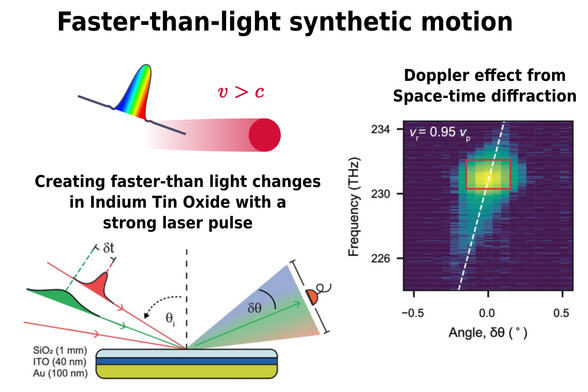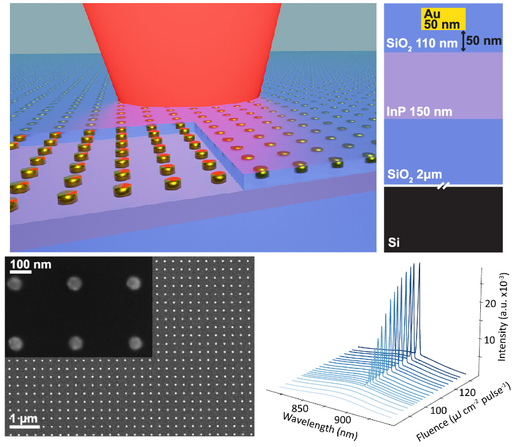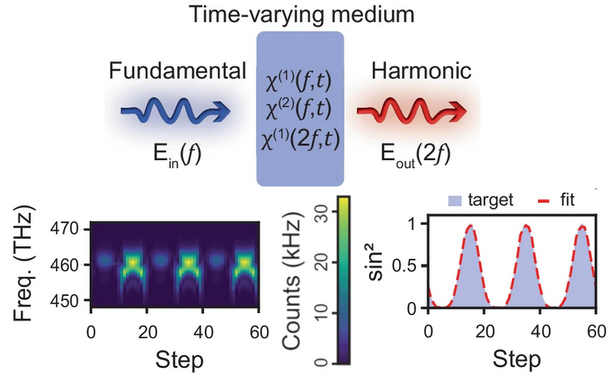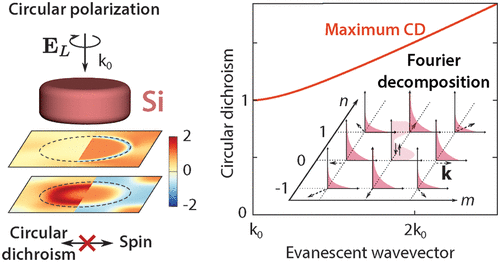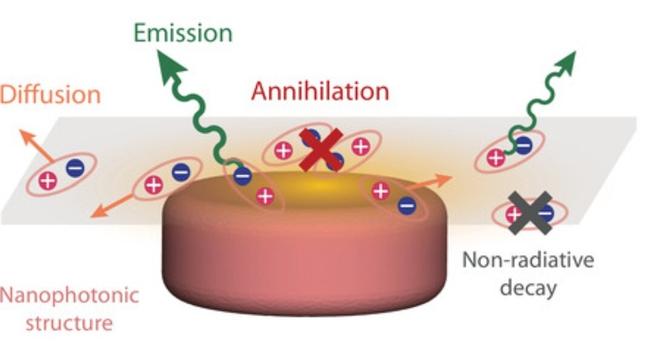Creating motion faster than light.
What happens when light falls on something moving faster than light? The question might seem meaningless - after all, according to relativity, nothing can move faster than light.
But even though no object can move faster than light, it is possible to create "synthetic" motion that is faster! The trick is to change the properties of a material in a way resembling a Mexican wave in a stadium: Although no one leaves their seat, their organised motion creates a wave. In the same way, a "wave" of changing properties of a material travels faster than light.
In our just-published Nature Communications paper, we do this experimentally. By shining intense laser light on a material called Indium Tin Oxide, we create a wave of changing properties that travels faster than light. When light falls on this moving motion, it creates new colours (frequencies) of light that are scattered in different directions. This space-time diffraction is similar to the phenomenon of Doppler effect, where the sound of a passing train reaches us at a higher frequency when it is moving towards us and at a lower frequency when it is moving away from us. We show that the experimental results of Doppler effect match the prediction from Einstein's theory of relativity of a particle moving faster than light exactly, once we extend it to work with speeds faster than light by letting time and space be imaginary!
Read the paper here: https://www.nature.com/articles/s41467-025-60159-9/
